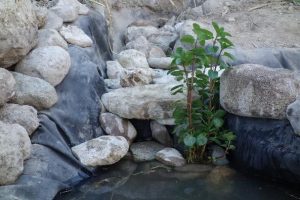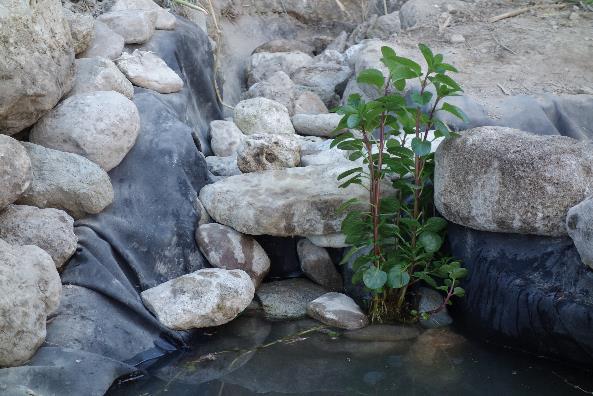Appropriate Technology, Courses and Events
El último fin de semana de 16-17 de abril hemos llevado a cabo un taller de Tratamiento de Aguas Residuales por Fitodepuración, facilitado entre los coordinadores de Sunseed y el colectivo Paissano, amigos de Sunseed apasionados por temas de tratamiento y potabilización de agua. Hemos invitado a participar tanto a lxs voluntarixs de Sunseed como personas de la zona interesadas en aprender cómo construir un sistema ecológico de tratamiento de aguas residuales casero y de bajo costo. Después de cubrir los gastos básicos de comida y alojamiento el aporte económico ha sido voluntario.
Entre unos 10 participantes del curso emprendimos un proyecto práctico de mejorar la última etapa de nuestro sistema de aguas y embellecer el espacio alrededor del camino a la famosa poza de Los Molinos. ¡Construimos un estanque nuevo!

Los estanques están habitualmente instalados como la última etapa de sistemas de tratamiento de agua con humedales artificiales (reed beds). Sirven tanto para almacenar el agua depurada con fin de aprovecharla para riego, como para crear un hábitat natural de fauna y flora, así aumentando la biodiversidad del entorno. Nuestro estanque consiste de una zona de infiltración con grava (sembrada con plantas depuradoras – macrofitas) y zona profunda dónde en futuro queremos plantar macrofitas flotantes como lentejilla de agua o nenúfares. Cuenta con 1200 litros de almacenamiento y un desagüe instalado para regar una huerta/jardín ejemplo en el futuro. El diseño del jardín se realizará durante el Curso de Diseño en Permacultura en Sunseed (1-15 de mayo 2016).
Etapas de construcción


Primero lo primero, tuvimos que limpiar la zona de construcción, anteriormente ocupada por un estanque fantasma, cual con tiempo se había llenado con barro y ha sido apoderad de la omnipresente caña. Los rizomas de caña habían perforado la capa impermeabilizante de plástico, cual dejó de cumplir su función.
Limpiando la zona del viejo estanque, mucho barro y rizomas de caña…
Después de cavar dimos la forma al estanque nuevo, a través de un proceso de diseño interactivo entre todxs llegamos al consenso de construir una isleta en medio y así naturalmente dar al estanque una pendiente de bajada alrededor de ella. Compactamos el fondo e instalamos el tubo de desagüe.

Instalación del tubo de desagüe.
Impermeabilizamos el estanque con EPDM, un material resistente y flexible. Alrededor colocamos piedras y construimos un pequeño muro seco de ellas para proteger ante la caída del barro en caso de lluvias fuertes. Al seguir rellenamos la parte poco profunda con grava. Ahora solo falta rellenar el estanque con agua y sembrar plantas.

Pensando en los futuros habitantes de nuestro estanque hemos construido una cuevita, la futura casa de una rana muy feliz.


Con finalizar la construcción hemos abierto muchas posibilidades de crecimiento de este proyecto. Varias personas voluntarias de Sunseed van a tener la posibilidad de experimentar con la siembra de plantas, elaboración de un jardín autoregante con agua depurada y las modificaciones estéticas del mismo estanque. Como siempre en Sunseed, un proyecto nunca termina, sino va evolucionando…
Para mas información sobre proyectos y cursos parecidos, puedes contactar con nuestro coordenador de Tecnologías Apropriadas, Piotr: piotr.jankowski@hotmail.com.






